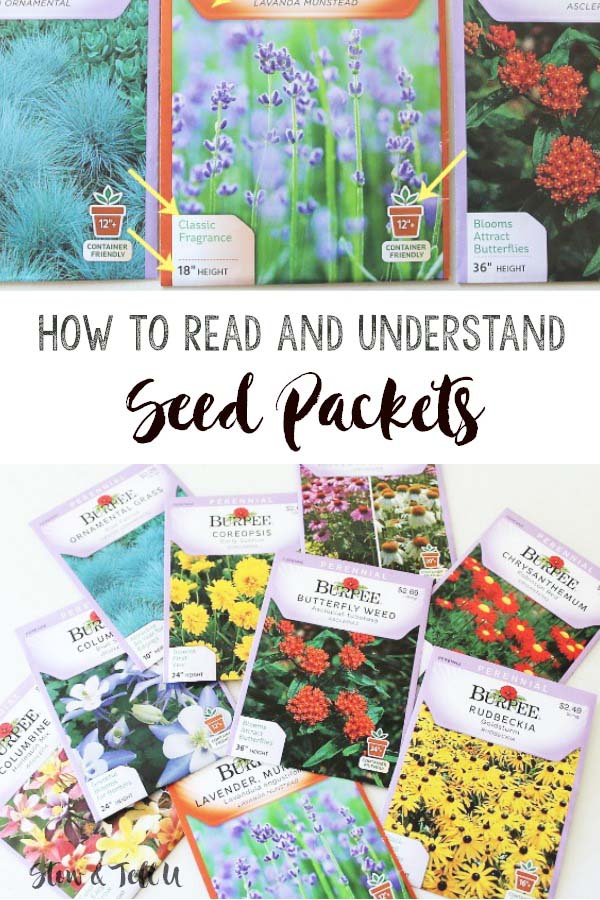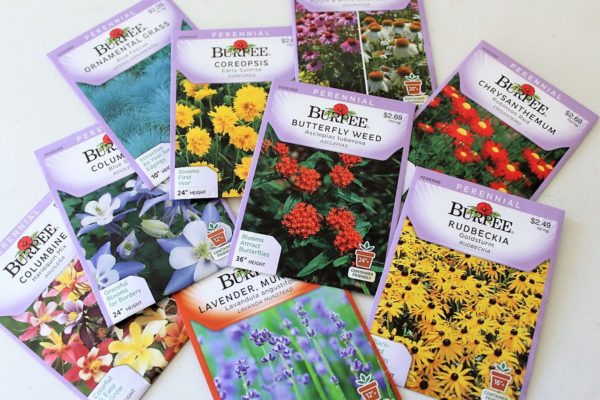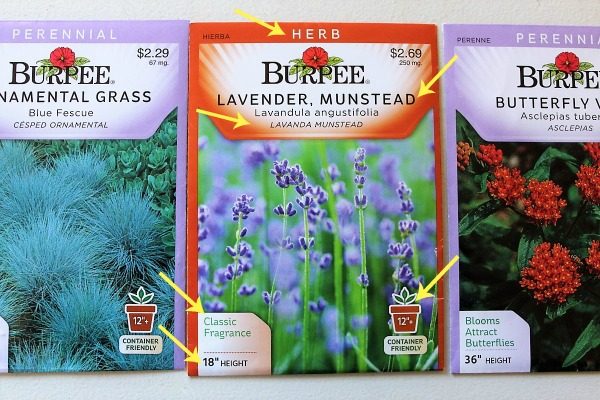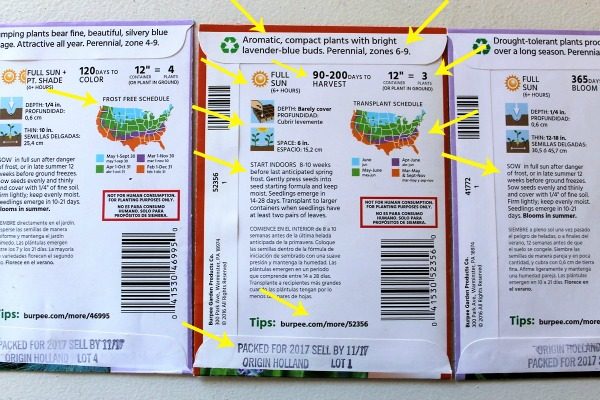I think it was just a week or two into the new year when I started seeing plant growing containers on the shelves. I got a little excited… of course anything non-Christmassy is exciting right after the holidays, for me at least.
Welcome back to the Start with a Seed series. This is part 3 where I’m covering buying seeds and understanding the details on those seed packets, aka: specifics you’ll want to know for getting the best results when sowing and growing your own plants from seed.
How to read seed packets
Buying seeds
There are 2 main ways to get your hands on seeds for growing: buying them from the local store or nursery or buying them online. In my opinion. the more local the seeds the better, and I plan to use that as a guideline, rather than a rule.
As I’ve mentioned, I want to add native (Illinois) plants to my yard. To buy seeds online, I have been doing a google search using: Native plant seed sellers Illinois. From there, I’ve made my choices and pinned them to my board on Pinterest, so they’re easy to find when I’m ready to place an order (which will be in the next few days.)
Last weekend, I also took a trip to our local Menards and found about $20.00 worth of seed packets that fall into my list from the garden planning printable in part 2.
 Understanding seeds packets
Understanding seeds packets
Reading the info on the back of the seed packets should have been the priority, but I must confess, these packets kinda had me at the pretty seed packet pictures. Anywho, I brought the packets home to further analyze the seed packets details. Understanding and following this information is going to help me get a final plan in place for sowing and planting.
One of my favorite discoveries was that many of these plants suggest sowing the plants right into the ground. That means I could start less of them indoors. Skipping that step would be nice, less work, right? What I’ve decided to do is try both methods for some of my seeds. If I’m going to do this, I want to get the most out of it and hopefully have plants in abundance when I’m done.
Knowledge = good planning
Understanding seed packets can be very helpful for putting a garden growing plan together. Most seed packets contain some or all of the following information. These are the kind of details that will help me put the packets into growing groups and later planting groups.
Seeds that have the same growing requirements, such as “start indoors” or “sow outside” can be grouped together and then started at the same time.
Info found on a seed packets
Here is the info I found on these Burpee seed packets. I would imagine most of the same info would be on other seed packet brands, as well. In addition, if shopping for seeds online, this would be the same type of info the seed seller should include. So getting familiar with it can only improve the whole process.
Front of seed packets
Plant classification: Annual, perennial, herb
Common name: The simple non-scientific name. This can vary from region to region.
Latin name: This should be the same, no matter the common name, and the most precise identifier.
Plant feature: Reasons one would want to grow the plant, ie: border plant; colorful and easy to grow; attracts pollinators; etc…
Plant height: Knowing the height of a plant will help one decide where in the garden it might look best.
Container height: The height of a plant can vary when grown in a container versus grown in the grown.
Back of seed packets
Zone: The part of the country/ continent based on temperature and climate for growing conditions.
Plant habit: Specific growing habits of the plant, ie: grows in clumps; trailing vine; blooms in spring, etc..
Sun exposure preference: Knowing how much or little sun is needed will help one decide where in the garden it might grow best.
Sowing directions: The preferred method of sowing, suggested by the seed supplier.
Best sowing process: Details for the preferred and alternative method for sowing, suggested by the seed supplier.
Planting to ground schedule per zone: The best time to place plants into the ground based on one’s zone and after the last frost, etc…
Harvest, bloom or color time: This information is based on the time from the sowing start date.
Container planting details: The recommended amount of plants per container size listed.
While I haven’t taken a class on seed sowing, I feel like I’m learning more and more as I’m going along. And gaining confidence that I can do this successfully.
For the other plants on my list that I would like to grow, I am going to order those online. I’ve already been scoping them out and I’ve saved them to my Pinterest board. I’ve noticed that by getting familiar with the info on the seeds packets from the store, the info provided online per seed/seller is making more sense.
Start with a Seed Series
Part 1 – Start with a Seed Plant Growing Series Intro
Part 2 – Free 2 Page Garden Planning Printable
Bonus – Kid Friendly Pipe Cleaner Plant Markers
This post contains some affiliate links for your convenience. See full disclosure for details.

 Understanding seeds packets
Understanding seeds packets

Feral Turtle says
Geez I just look at the picture on the packet and if it looks good, I grab it. lol. Probably why my thumb is so black! 🙂
Amy says
Somehow I doubt you have a black thumb, but I agree, the seed packet pictures get me every time.